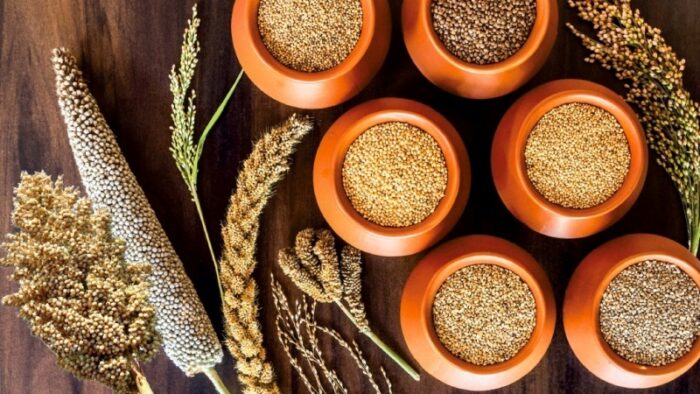Read full article By Arunima Gupta @ Softpower Mag Photo Credit: Outlook Poshan
The United Nations General Assembly, last week, adopted a unanimous resolution to commemorate 2023 as the “International Year of Millets.” Initiated by India, the resolution was co-sponsored by six other countries – Nepal, Nigeria, Bangladesh, Russia, Senegal, and Kenya. The underlying objective is to create greater awareness of the nutritional and ecological benefits of millet consumption as well as cultivation. Furthermore, T.S Tirumurti, India’s Permanent Representative to the UN, also emphasized this move to “drive policy actions and focus for enhanced investments in research and development and extension services related to millets”. Prior to the resolution being passed, the Indian Mission distributed “murukku” to all the representatives of UN Member States. While a tasting of this millet-based Indian snack, would not have been the only driving factor for the resolution to pass, it surely would have conveyed the point that healthy foods can also be gustatory delights. More importantly, millets––most prominent ones being ragi (finger millet), korra (foxtail millet), jowar (sorghum), bajra (pearl millet) and sanwa (barnyard millet)––are rich in nutrients including calcium, proteins, vitamins, iron, zinc and fibre. Owing to their immense health value, millets are also known as nutri-cereals. Furthermore, they can be grown in harsher climates with requiring relatively less water and chemicals, a reason why they are also referred to as coarse grains. Millets have been an integral part of the Indian diet for centuries, with their cultivation being mentioned as early as the time of the Sindhu-Sarasvati Civilization. The text Bhojanakutuhalam also details the attributes of Sorghum as being “sweet, strengthening, treats vitiations of the three dosas (Vata, Pitta and Kapha), is aphrodisiac, imparts tastes, treats hemorrhoids, wholesome, treats tumor and wounds.” Today, millets continue to be consumed across India. In the northern state of Rajasthan, Bajra or pearl millet is commonly prepared as roti (flatbread), khichdi (savoury porridge) or raabri (soup). Similarly, some of the traditional food made of Ragi include muddu (dumplings) in Karnataka, koozh, (porridge) in Tamil Nadu or Puttu in Kerala. Nucchina Unde, another delicacy native to Karnataka, dosa (crepes) and payasam (pudding) all made of millets are some other culinary treats. The harvest of millets is also celebrated in many parts of India, such as the Metumniu festival of the Yemchunger Tribe in Nagaland. The many diverse, traditional recipes and customs revolving around millets, indicate that these grains play a central role in India’s gastronomical heritage. It also tells us the importance our forefathers accorded to eating wholesome and healthy meals while keeping the environmental factors in consideration.India Leads Initiative to bring Zing Back to Millets
Around the World, Asia-Pacific, Finger millet, India, Millets, Millets and Sorghum
